Baseball is arguably the most popular sport for Americans. And in this country, there are few things as iconic as the baseball bat. Traditional wooden baseball bats that are used by professionals in Major League games are some of the most sought-after sports gears for collectors and players worldwide.
Now, cricket might not be as popular in the US, but it’s certainly big in Europe and Asia. And if you hear about it for the first time, you’d think that the two sports are innately similar. After all, both of the games are played with a batter, a pitcher/bowler, a catcher/wicketkeeper, and fielders.
You can call these games long-lost brothers who grew up in different parts of the world.
However, the two games couldn’t be more different from one another. Some claim that baseball is derived from cricket, but I wouldn’t go into that comparison here. Instead, I want to talk about the Baseball Bat vs. Cricket Bat that are used in the two games. So, are baseball bats the same as cricket bats?
The short answer is no; they are not even close. Everything from the shape, size, weight, or even the hitting style of a baseball bat is drastically different from a cricket bat. And you can’t use a baseball bat in cricket or vice versa. But you’re not here for the short answer, are you?
While I know a lot about baseball because I’m a coach, I had to figure things out about cricket. But now, I can clearly see the differences!
Here, I will give you a thorough comparison between baseball bats and cricket bats so that you’ll be able to understand the distinction between them clearly and definitively.
Table of Contents
Key Differences Between Baseball Bat vs. Cricket Bat
A baseball bat and a cricket bat are miles apart both in design and how they’re used. If you’ve never seen a cricket bat before, I can understand the confusion. However, if you see the two bat types side-by-side, you won’t have any trouble figuring out which is which.
With that said, here’s a quick chart highlighting the key differences between a cricket bat and a baseball bat.
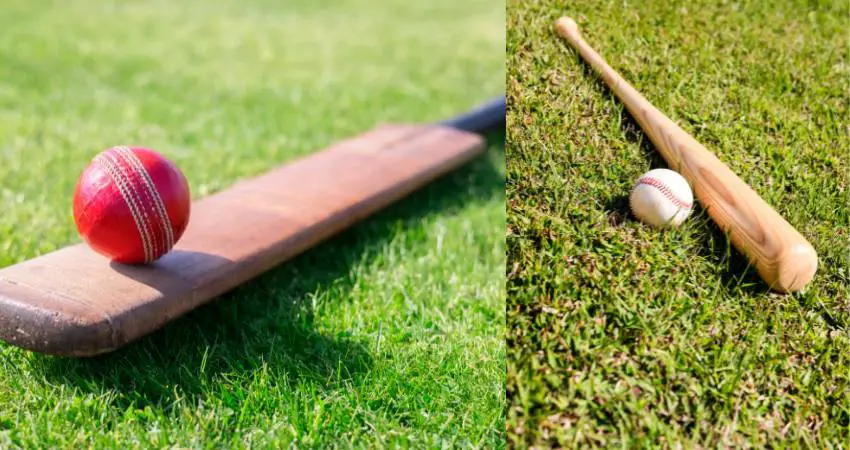
| Differentiating Factors | Cricket Bats | Baseball Bats |
| Shape | Flat on hitting side, ridged on the back | Long, thin, and rounded |
| Weight | 2.8 to 3.2 pounds | 33 to 36 ounces average |
| Weight Distribution | Top-heavy | Balanced |
| Size | 38 inches max | 42 inches max |
| Hitting Power | Moderate | High |
| Construction Material | Wood – willow | Aluminum, Composite, Wood – maple, birch, ash |
| Price | 300 – 600 dollars (top-tier) | 300 – 400 dollars (top-tier) |
Now that you have a basic idea about the key differences let me break down each of these sections, so you have no confusion about the two types of bats.
1. Bat Shape
The first major difference between a baseball and a cricket bat is the shape. You see, if you’ve never seen a cricket bat, and somebody came and told you the general rule of the game, you’d most likely be picturing a baseball bat in the hands of a cricketer. But in truth, the shape of the two bats are worlds apart.
A baseball bat, as I’m sure you’re aware, is long and narrow. It has a rounded barrel at one end, which you use to hit the baseball. And on the other end, you have the handle, which is noticeably thinner than the barrel side. It’s aerodynamic in design to help you swing through the air efficiently.
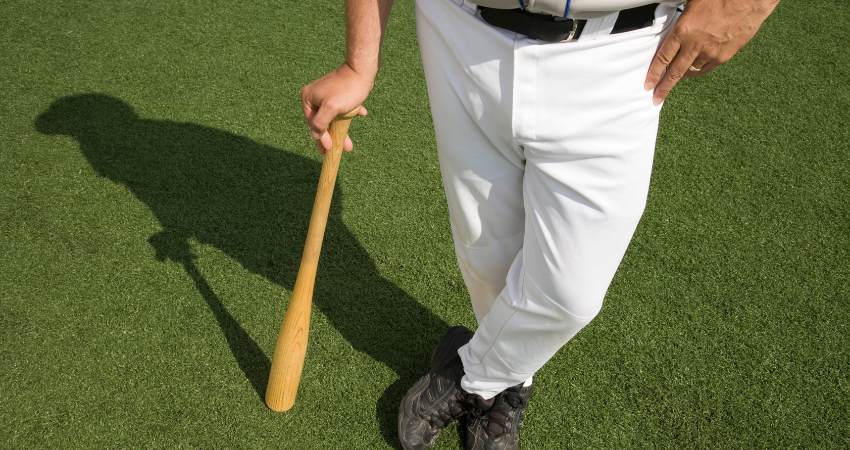

A cricket bat, on the other hand, is not as aerodynamic as a baseball bat. It has two sides – the front and the back. The front part of the bat is flat, which you use to strike the cricket ball. The back part of the bat is ridged to help you swing the bat easier.
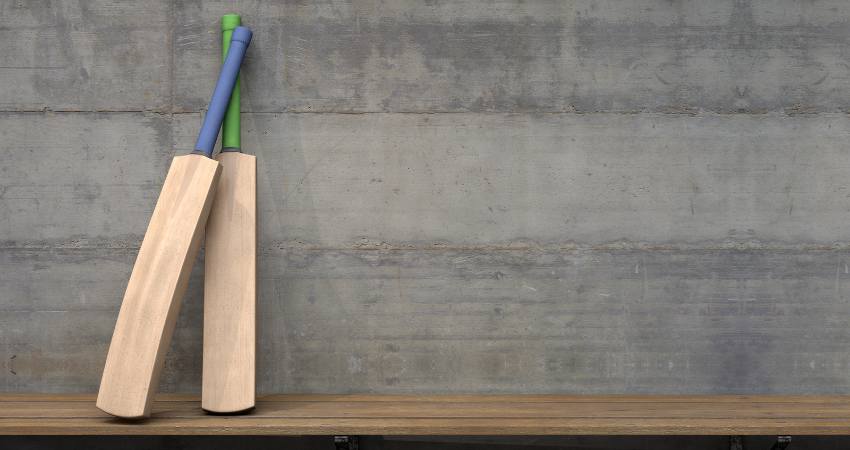

The handle part of the baseball bat is a lot more distinct than that of a baseball bat. And it’s much thinner than the rest of the sections of a cricket bat. Typically, the handle of a cricket bat comes with a stronger grip than a baseball bat, with grip tapes attached to give you better control of the bat.
2. Weight and Weight Distribution
Another major difference you’ll notice when you pick up the two types of bats is their weight. Although back in the day, people would use heavy baseball bats that would weigh around 2 to 3 pounds, these days, the average weight of a baseball bat ranges between 33 to 36 ounces.
Compare that with cricket bats, and you’ll see a substantial difference in weight. Cricket bats usually weigh around 2.8 to 3.2 pounds, which is close to old-school bats but a lot heavier than modern baseball bats that are used today. But the raw weight is not the only thing that’s different with cricket bats.
Cricket bats, because of their unique shape, have a top-heavy design. That means most of the weight of the bat is distributed to the top region of the bat that you use to strike the ball. Because of this, the batter will have good control over his swing and can pull off a wide range of shots with a cricket bat.
However, baseball bats usually have a balanced swing weight. The weight distribution is typically even across the bat. There are exceptions, of course. End-loaded baseball bats for power hitters have a greater weight near the barrel end of the bat.
3. Bat Size
Another obvious difference between a cricket bat and a baseball bat is its size. Typically, a baseball bat is slightly longer than a cricket bat. The average size of a baseball bat ranges between 37 to 40 inches. You wouldn’t usually find a baseball bat that’s longer than 42 inches.
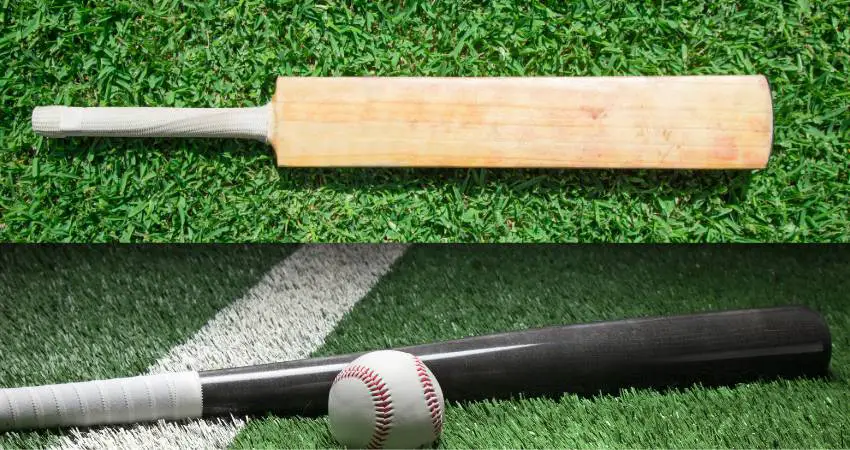

However, for cricket bats, the maximum size caps out at 38 inches. While baseball size is measured in inches, cricket bats have specific numbers for different sizes. The numbers indicate the bat that’s appropriate for different age groups.
For example, a cricket player who’s around 11 to 13 years of age would use a size 6 cricket bat. For professional players or adults, there are three different sizes that are used in cricket bats – Harrow, Full SH, and Full LH. Harrow is the smallest size, while Full LH is the longest.
If you want to learn more about cricket bat sizes, you need to do some research on your own – I can’t offer much help there. However, I have a complete guide on how to size a baseball bat that you might want to check out if you’re a baseball player choosing a new bat for yourself.
4. Construction Material
While both baseball bats, at least the MLB ones, and cricket bats are made of wood, the species of wood used to manufacture them are quite different. Old-school baseball bats used to be made of hickory wood. But these days, Maple, Birch, or Ash wood are commonly used to manufacture high-end wooden bats.
Cricket bats, on the other hand, are made from the wood of willow trees, or more specifically, English Willow or Salix trees. However, these days, teak, bamboo, and rosewood are also starting to get used steadily to manufacture cricket bats. But they aren’t that common yet.
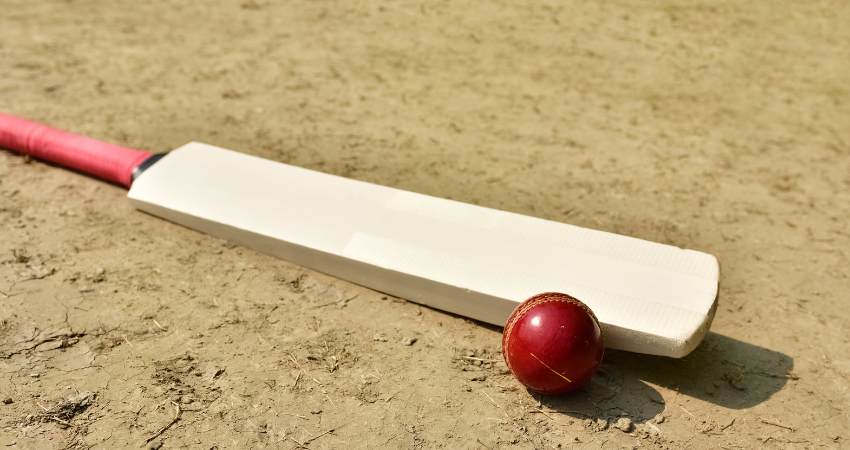

Unlike cricket bats, baseball bats can also be made from aluminum, alloy, or carbon composites. Youth and Little League players generally don’t use wooden baseball bats. Instead, most Little League players use either a composite bat or a bat made of aluminum alloy.
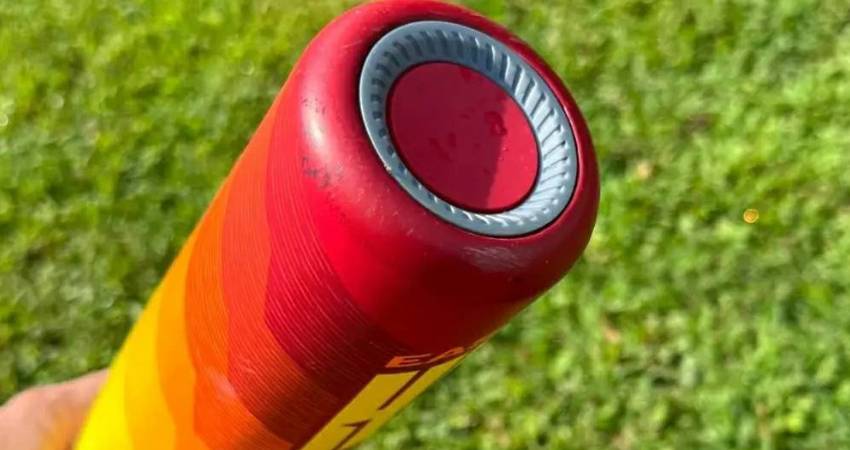

Even in high school or senior baseball leagues, you wouldn’t see much use of wooden bats. Wooden bats are typically only used in MLB. A casual or amateur player usually sticks to a high-end composite bat or alloy bat for their games. But cricket players, regardless of their skill level, always use wooden cricket bats.
5. Hitting Power
Now that I have discussed some of the obvious differences between the two bats, let’s talk about things that are not so apparent immediately. The first thing that I want to talk about is the hitting power of the bats.
Now, a cricket bat is bigger with a larger hitting surface. That would, in turn, make you think that it can generate a higher hitting power, right? Well, not necessarily.
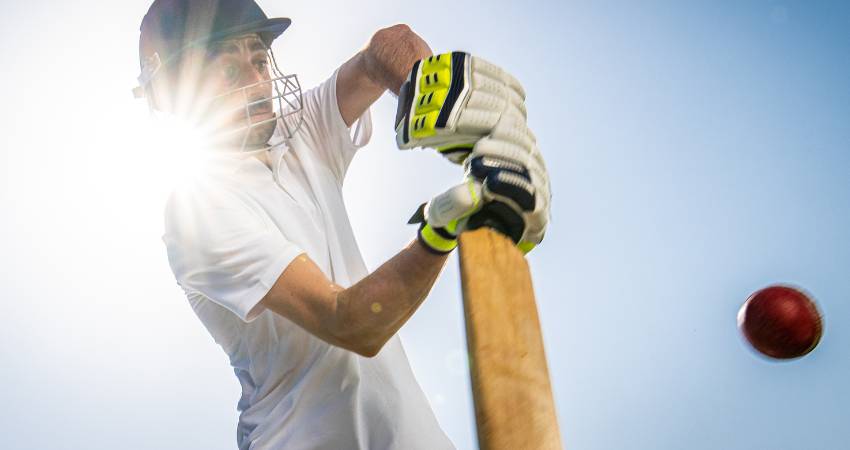

You see, baseball bats produce something that’s called the trampoline effect. Basically, when you make a good connection with the baseball using your bat, the barrel of the bat compresses and expands. So, the bat not only takes the energy from your hand but also the kinetic energy stored in the bat itself to rebound the ball faster and harder.
With cricket bats, there’s no compression going on. The lack of a trampoline effect means the entire energy is generated by the player. A cricket bat doesn’t serve any purpose other than solely being a hitting surface. That’s why the hitting power of a cricket bat is usually less than that of a baseball bat.
6. Hitting Angle
Another difference between a cricket bat and a baseball bat that’s not as obvious as the shape or size difference is the hitting angle that you can get with each bat type. By hitting angle, I mean the angles at which you can connect with the ball for the two different sports.
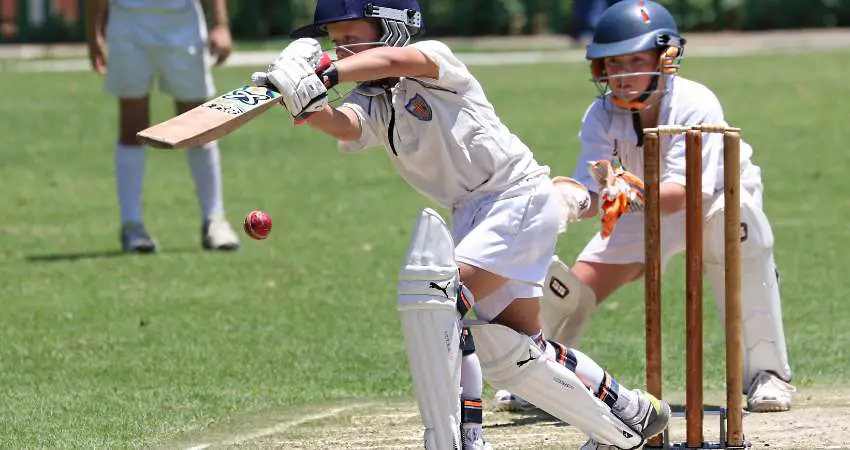

Let’s talk about baseball first. In baseball, the hitter is generally trying to hit the ball as it travels through the strike zone. As a result, the bats are designed for speed and optimal energy distribution. But in terms of hit angles, it’s really not versatile since the hitter is supposed to swing the bat through a specific zone.
Cricket bats, however, offer a 360-degree angle of coverage. That means you’ll be able to swing the bat at any angle and even from the opposite side to how you are holding the bat. The ability of a cricket bat to cover any angle makes it extremely versatile compared to a baseball bat.
Which is Harder to Hit Cricket or Baseball?
This is a tough one to answer. You see, I’m a baseball player – always have been, always will be. And if you hand me a cricket bat and ask me to hit a cricket ball, naturally, I would have a harder time hitting it than I would if I were playing baseball.
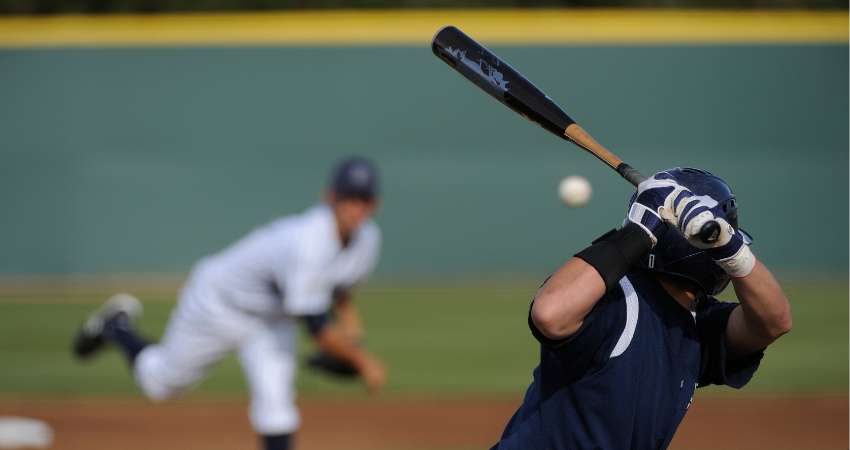

But if I’m being objective and impartial, I would say that there are hard elements to both games. In baseball, the pitcher is usually throwing the ball at break-neck speeds. And since the bat has a small hitting area, it can be hard to pull off a good hit consistently.
The tough part about hitting a cricket ball is that the bowler (that’s what they call their pitchers) bounces the ball off the ground. This lets them put complicated spins on the ball that can confuse the batsman. Being a batsman in cricket requires quick reflexes and a keen eye to spot the direction of the ball.
In other words, both sports require a lot of skill and practice to master. And the difficulty curve of each sport is different.
Is a Cricket Bat a Better Weapon Than a Baseball Bat?
To be honest, I wouldn’t really rely on a cricket or a baseball bat for self-defense. But if it’s an emergency situation, like if a burglar breaks in and the only thing I can get to is a bat, I would probably say a baseball bat is a better choice as a weapon.
You see, cricket bats are pretty deadly if you use them as a weapon. It has sharp edges, and the flattened side can also be used as a blunt weapon if you want. But the downside to this is that it’s pretty heavy.
With a baseball bat, you’d be able to hit fast, and the hit would be pretty devastating, too. Regardless, you shouldn’t really go attacking people for no reason with either of the two bats.
Final Thoughts
As you can see, there are a lot of differences between a cricket bat and a baseball bat. Even if you don’t know anything about cricket, you’d have no trouble spotting the differences if you know baseball.
For what it’s worth, though, I hope my comparison between a baseball bat and a cricket bat could help you understand the key distinction between the two bats. Cheers!
